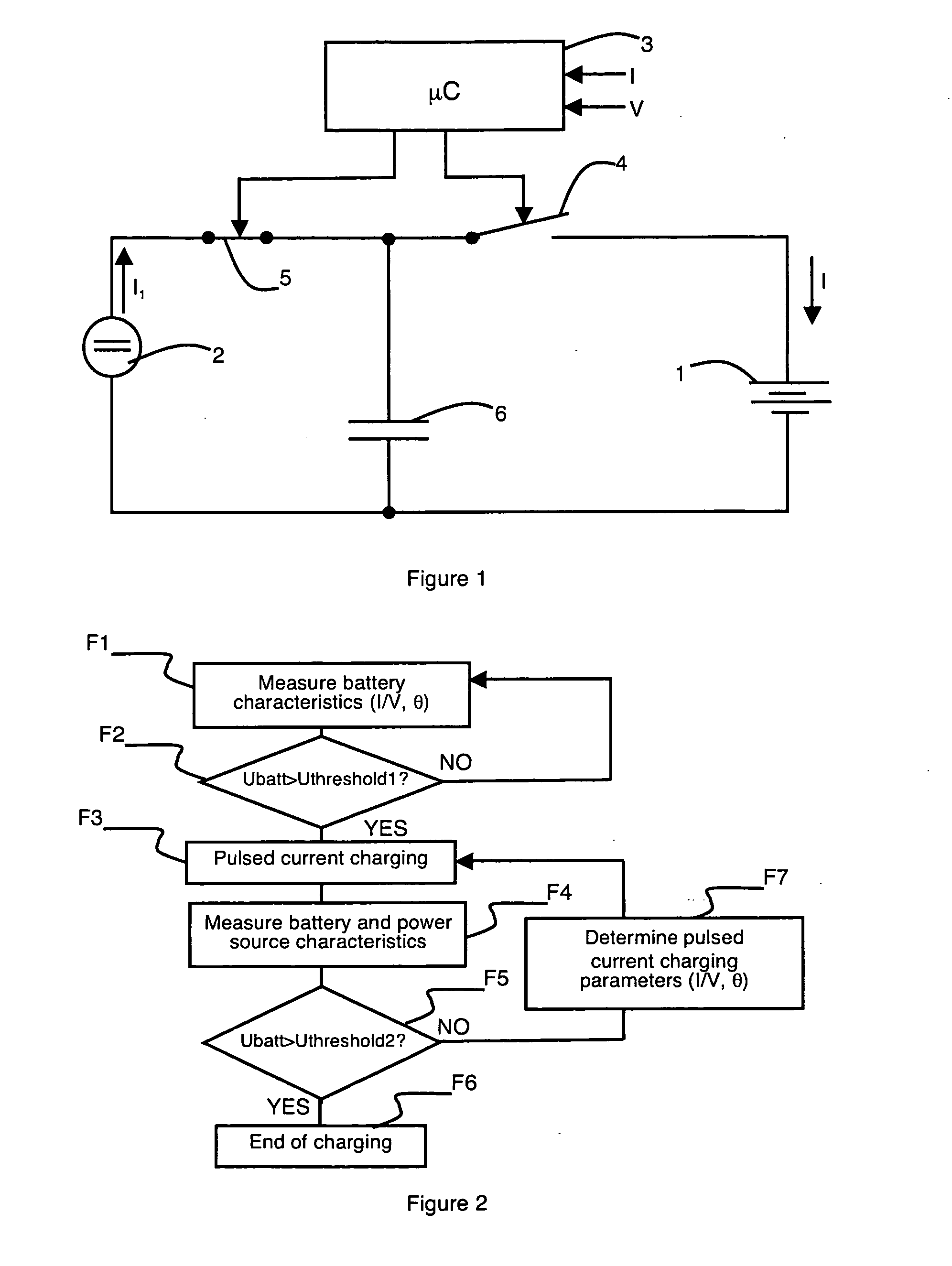Method for pulsed charging of a battery in an autonomous system comprising a supercapacitance
a technology of supercapacitance and autonomous system, which is applied in the direction of secondary cell charging/discharging, electric vehicles, electrical apparatus, etc., can solve the problems of prohibitive cost of a conventional power supply by cable, limited power and energy generated by intermittent power sources such as photovoltaic panels or wind-power generators, etc., and achieves the effect of convenient implementation
- Summary
- Abstract
- Description
- Claims
- Application Information
AI Technical Summary
Benefits of technology
Problems solved by technology
Method used
Image
Examples
Embodiment Construction
[0017]As illustrated in FIG. 1, the autonomous system comprises at least one battery 1 constituting a power storage element, an intermittent power source 2 and a charging control circuit 3 comprising means for managing charging and end of charging. First 4 and second 5 electronic switches are connected in series between intermittent power source 2 and battery 1. Opening and closing of electronic switches 4, 5 are controlled by charging control circuit 3 via integrated control means.
[0018]Battery 1 is for example a lead or nickel battery and in more general manner a battery with an aqueous electrolyte.
[0019]During its operating periods, intermittent power source 2 delivers a direct current I1 which depends on the outside environment.
[0020]The system also comprises an intermediate power storage element formed by a supercapacitance 6. Supercapacitance 6 is connected in parallel with power storage element 1 via a first electronic switch 4 and in parallel with the intermittent power sour...
PUM
 Login to View More
Login to View More Abstract
Description
Claims
Application Information
 Login to View More
Login to View More - R&D
- Intellectual Property
- Life Sciences
- Materials
- Tech Scout
- Unparalleled Data Quality
- Higher Quality Content
- 60% Fewer Hallucinations
Browse by: Latest US Patents, China's latest patents, Technical Efficacy Thesaurus, Application Domain, Technology Topic, Popular Technical Reports.
© 2025 PatSnap. All rights reserved.Legal|Privacy policy|Modern Slavery Act Transparency Statement|Sitemap|About US| Contact US: help@patsnap.com



